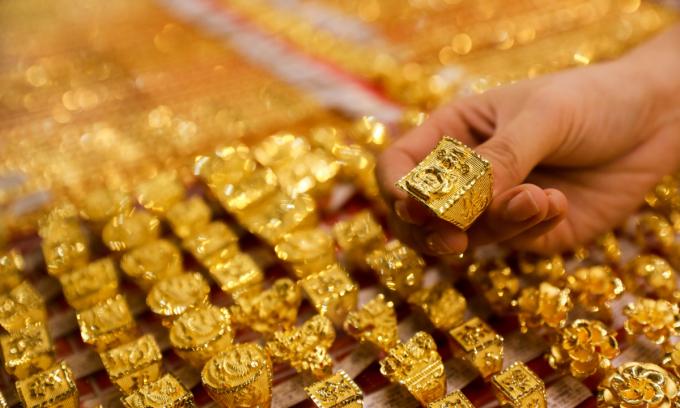The criminal conviction of the once-lionized cryptocurrency billionaire will have ripple effects on the entire industry.


After just a few hours of deliberation, a New York jury on Thursday convicted Sam Bankman-Fried of fraud and conspiracy in the public flameout of his cryptocurrency exchange FTX, which stands accused of stealing as much as $10 billion from customers. Bankman-Fried, who gained international prominence as the disheveled crypto genius behind the exchange, which he founded in 2019, could be sentenced to decades in prison.
The intense, five-week criminal trial unveiled the framework of deception that Bankman-Fried, 31, had for years used to prop up FTX and himself and, despite the protests of some crypto enthusiasts that he was just one rotten apple, made it hard for the public not to wonder whether the rest of the crypto world operates with such disregard for rules and risk behind the scenes, too.
Take, for example, Bankman-Fried’s jarring testimony — a final attempt to drive home his narrative of wide-eyed carelessness — that he “didn’t know anything about crypto” before starting FTX, his now-bankrupt cryptocurrency exchange. “I just knew they were things you could trade,” he told the jury. Millions of customers had traded on FTX, depositing money onto the exchange on the basis that it was the most trustworthy crypto exchange available. After the company filed for bankruptcy late last year, approximately 9 million creditors, including FTX customers and investors, were identified.
At its height, FTX was valued at more than $32 billion, and Bankman-Fried himself was worth about $26 billion. That lucrative empire fell to shambles in late 2022, when it became public that FTX had been using the deposits of its customers as a de facto piggy bank covering both business and personal matters. Prosecutors said FTX took billions from its clients to cover debt and make trades at sister hedge fund Alameda Research, to buy luxury real estate, to make political and charitable donations, and more. Bankman-Fried was charged with multiple federal counts of fraud, money laundering, and conspiracy, and arrested in the Bahamas last December.
The trial was much watched by crypto insiders, skeptics, and legal experts because it’s the biggest crypto fraud case to date, with wider consequences for the entire industry. The media, once full of effusive praise for Bankman-Fried and a key vehicle for his rise to fame, turned against him. The mood in the overflow rooms at the courthouse, filled with lawyers, crypto enthusiasts, financial victims of FTX’s fallout, and other rubberneckers, had reportedly been gleeful, with onlookers finding amusement in the trial’s twists and turns. The crypto industry had excommunicated its most visible titan, too, either because traders were angry they’d personally been burned or because they saw him as crypto’s worst ambassador, contributing to the impression that crypto is shady and replete with criminal activity.
The prosecution came with a mountain of receipts. Former executives and employees at both FTX and Alameda, including Alameda CEO and Bankman-Fried’s ex-girlfriend Caroline Ellison, FTX co-founder Gary Wang, and FTX head of engineering Nishad Singh, testified that they had committed crimes at his behest. Prosecutors also produced tweets, screenshots of texts and group chats, direct messages, and quotes from the many, many media appearances and interviews Bankman-Fried had given to the press. All the while, Bankman-Fried maintained his innocence, saying he didn’t realize FTX funds were missing until just before its collapse. The defense’s main weapon was to maintain that Bankman-Fried had merely been overworked and unwittingly allowed things at FTX and Alameda to spiral out of control — that it wasn’t intentional. He downplayed how much he knew, and how much control he had over his subordinates. “I don’t recall giving any direction,” he said when asked about the misuse of FTX customer funds.
Throughout the trial, however, he and his defense failed to offer a compelling explanation for how billions had been misappropriated without the CEO’s knowledge, or why his subordinates would engage in such a scheme without his involvement. Adding to the circus-like atmosphere, his team requested a delay until the defendant could receive Adderall, a prescription drug often used to treat ADHD. The delay request was denied, but Bankman-Fried had also reported not having access to Adderall while in jail awaiting trial, and complained of cruel conditions. And then, with the defense’s arguments going poorly, they made an eleventh-hour decision to put Bankman-Fried on the stand.
For years, Bankman-Fried presented himself as the oddball genius leader of an effort to legitimize the crypto world — to demystify it, and show the world that it was exciting but safe because he was a responsible steward. Early articles about him spotlit his incredible success — emphasizing his youth — and burgeoning influence, particularly as a philanthropist and political donor. He graced magazine covers and was named one of Time magazine’s 100 most influential people in 2022. (Disclosure: Last August, Bankman-Fried’s philanthropic family foundation, Building a Stronger Future, awarded Vox’s Future Perfect a grant for a 2023 reporting project. That project is now on pause.) He continued to try to control the narrative even in the months following the company’s implosion.
“Basically, as soon as the company collapsed, he seemed to think that if he just explained things well enough, people would understand that he didn’t do anything wrong,” says Molly White, a crypto researcher who has been following the trial — and FTX at large — closely. Prosecutors even implied that the master storyteller spun a “smooth” narrative while on the stand, one that emphasized his earnestness and good intentions.
During the trial, the prosecution also revealed a document created by Ellison titled “Things Sam Is Freaking Out About” — and on the list was “bad press.”
He had reason to worry. It took just one outlet to unravel the yarn Bankman-Fried had spun. The crypto news site CoinDesk’s initial questioning of Alameda’s balance sheet, for which it won the 2023 Loeb journalism award, was the flint that sparked the fire leading to his downfall. It’s telling that when the fire started blazing in earnest, with customers unable to withdraw their funds because the exchange didn’t have enough money on hand, one of Bankman-Fried’s top priorities was to tweet that everything was fine.
When times were good, Bankman-Fried was happy to be the face of FTX and crypto. He founded both FTX and Alameda and remained FTX’s CEO until the bitter end. All this made the defense’s claim that Bankman-Fried didn’t know about the missing FTX money until October 2022, not long before the exchange’s collapse, harder to believe. If he wasn’t the ringleader, then who at FTX and Alameda had gotten the idea to take the money and use it on investments, swanky real estate, political donations, and so much more?
Bankman-Fried couldn’t give a clear answer, instead implying that witnesses like Ellison, Singh, and Wang — who have all taken plea deals on their own fraud charges — were misremembering or lying.
The defense told jurors that he didn’t know about FTX’s troubles in part because he and other FTX heads were so busy “building the plane as they were flying it.”
Yet, in one of the most shocking moments of the trial, Ellison said that, on Bankman-Fried’s orders, she created not one but seven versions of falsified Alameda balance sheets that would make its financial situation seem less dire. These fake financial statements, prosecutors said, hid the billions Alameda owed FTX customers. One witness who helped fix a bug in FTX’s code testified that he’d told Bankman-Fried in summer 2022, months before whispers of trouble, that there were billions missing in customer funds at FTX.
Singh, the former engineering director at FTX, testified that when he began to suspect Alameda was using FTX customers’ funds, he arranged a meeting with his boss to express his concerns. As FTX began to crumble in late 2022, Singh asked Bankman-Fried to take the bulk of the responsibility, as CEO of FTX. At the time, he testified, he thought Bankman-Fried had agreed. But the trial has made clear that Bankman-Fried is unwilling to take responsibility — in his telling, his only failure was that the founder and leader of one of the biggest crypto exchanges in the world simply hadn’t caught on to the illegal machinations unfolding right under his nose.
Part of the lie Bankman-Fried successfully sold was that FTX was one of the safest crypto exchanges. The implosion of FTX showed that it was not safe — and perhaps nothing about crypto was, either. But the appearance of being by-the-book and risk-calculated was essential to FTX’s pitch to investors and to customers, and partly why it was the third-largest crypto exchange in the world by trading volume. It made Bankman-Fried a crypto whale — a term used to describe the handful of the biggest crypto holders in the world, often billionaires and multimillionaires — who had acted as the industry’s spokesperson. He publicly welcomed regulation (though he was adamant that crypto fall under the authority of the weaker Commodity Futures Trading Commission, not the Securities and Exchange Commission), and was often meeting with politicians in Washington, DC. He tried to put a palatable sheen on crypto, long treated with distrust and incomprehension by outsiders.
All of these public facts were used against Bankman-Fried in court. The prosecution grilled him on making claims about FTX’s safety, and referred to a Vox interview where he revealed a hostile attitude toward government oversight of crypto, writing, “fuck regulators.”
Reactions to the trial have shown that, like the jury, the crypto community is not on Bankman-Fried’s side, either. For some, his disgrace is a huge setback in the effort to clean up crypto’s reputation.
“I think they’re very angry,” says White.
For others, the idea of any regulation remains anathema to the ethos of crypto as a decentralized alternative to fiat currencies. In their view, Bankman-Fried was a sellout, or he was never really an adherent of crypto’s anti-establishment ideology in the first place.
In private messages revealed in court, Bankman-Fried had called anti-regulation crypto advocates on Twitter “dumb motherfuckers” who were “about to hand the industry” to SEC chair Gary Gensler.
It turns out Bankman-Fried and the FTX debacle have made regulatory scrutiny and crackdowns from Gensler’s SEC more likely. It has already been chasing after other major crypto exchanges, including Binance and Coinbase, and the agency has signaled its intention to dramatically accelerate its enforcement actions. “I think some people are blaming this crackdown on the crypto industry on Sam Bankman-Fried personally,” says White.
It’s not just about FTX and SBF, though. Throughout the trial, White says, we’ve seen ample indication that the chaos that went on at FTX may be “pretty normal stuff for the crypto world — things are often being run by the seat of someone’s pants.”
In closing arguments, the defense argued that Bankman-Fried had made mistakes, but he was being unfairly smeared as a “villain.” Everything he had done — the exorbitant spending on PR, the political donations, the falsehoods and exaggerations he told the public — had been in good faith and for the good of the business.
The prosecution emphasized that this trial wasn’t really about crypto, but about “lies and stealing and greed.” It was about a man who spun a wild, alluring, but ultimately false tale.
“Would you agree you know how to tell a good story?” US Attorney Danielle Sassoon asked as she cross-examined the defendant.
“I don’t know. It depends on what metrics you use,” Bankman-Fried replied.
In the end, the case, and the trial, served to shatter the myth of the monkish, eccentric crypto billionaire — an image that empowered Bankman-Fried to wield influence over crypto regulation and even on US politics. The outcome of the biggest crypto fraud trial ever all but ensures that the industry will be the target of more scrutiny, attempts at regulation, and cynicism. Bankman-Fried tried to weave a compelling case for why everyone but him was responsible for stealing people’s money. The jury determined that, in fact, the blame lies squarely on him.

Please don’t make airports healthy again. Just make them more efficient.
- 2 hours ago
Tagic Army Public School (APS) Peshawar incident completes 11 painful years
- 10 hours ago
AI boom seen lifting chipmaking equipment sales 9pc to $126bn in 2026
- 12 hours ago

My defense of a $40 cable paperweight – I’m sorry
- 4 hours ago

Young Leaders Conference 2025 highlights social stewardship on day two
- 12 hours ago
Sabalenka named WTA Player of the Year for second straight season
- 15 hours ago

Assailants kill cop, brother in gun attack in KP’s Lakki Marwat
- 12 hours ago
Pakistan qualify for semi-final of under 19 Asia Cup cricket
- 12 hours ago

A Kinect for kids is outselling Xbox to become the hot console this holiday
- 4 hours ago

YouTube made its video player easier to navigate on TVs
- 4 hours ago

Gold prices dip per tola in Pakistan, global markets
- 15 hours ago
Arteta tells critics to back off struggling Gyökeres
- 3 hours ago





